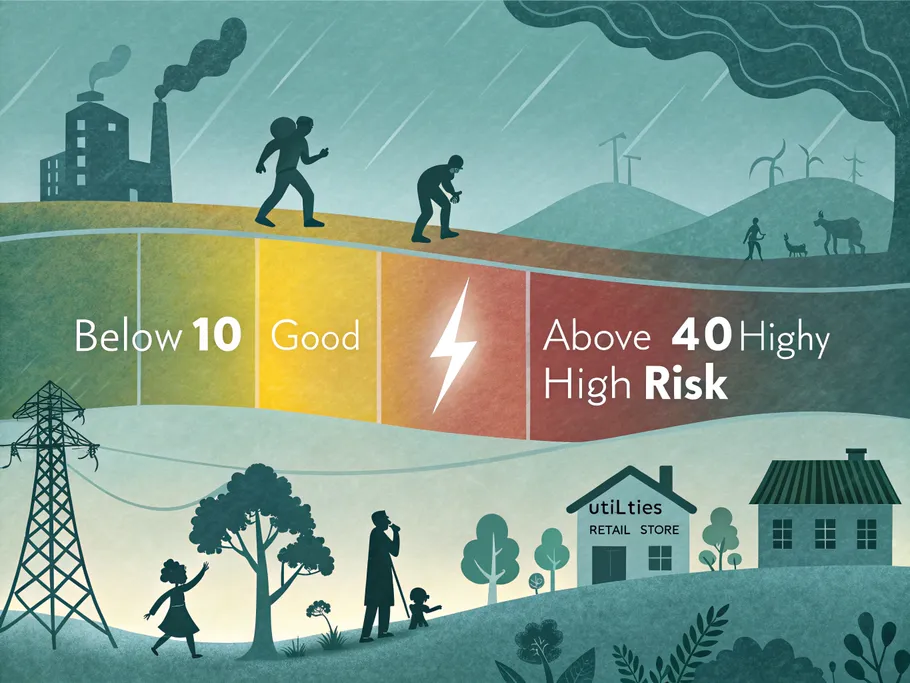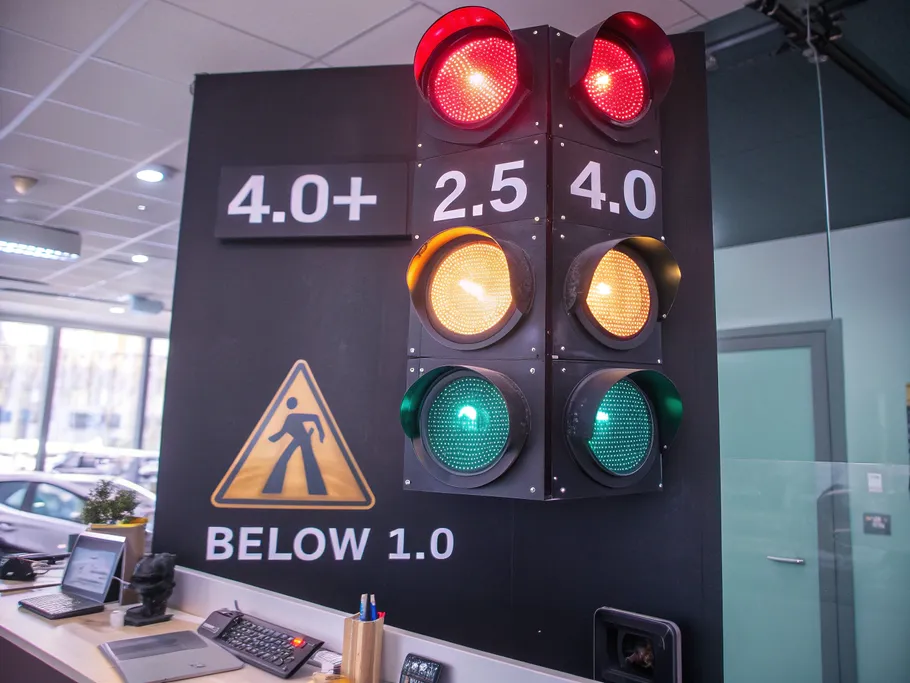So, what’s the deal with the debt to EBITDA ratio? Think of it as a financial stress test for a company. It answers a simple, brutal question: if a company threw all its operational earnings (before the bean counters deduct interest, taxes, depreciation, and amortization) at its debt, how many years would it take to pay it all off?
This metric, a type of leverage ratio, is your crystal ball for sniffing out a company’s ability to handle its IOUs. A high ratio screams, “I might be in over my head!” while a low ratio calmly suggests, “Yeah, I got this.”

Why It’s a Big Deal in Financial Ratio Analysis
Creditors and investors aren’t just being nosy when they look at this ratio. They use it to:
- Assess default risk: A high debt to EBITDA ratio can be a red flag for a potential bankruptcy bonfire down the road.
- Evaluate financial health: It’s a quick gut check on how well a company is managing its debt.
- Compare companies: It helps benchmark a company’s financial footing against its industry rivals.
- Make smarter decisions: It’s a key piece of the puzzle for evaluating profitability and stability before putting money on the table.
How to Calculate the Debt to EBITDA Ratio
Ready to do some math? Don’t worry, it’s simpler than it sounds.
The Formula:
Debt to EBITDA Ratio = Total Debt / EBITDA
Where:
- Total Debt: All the money the company owes, both short-term and long-term.
- EBITDA: This is the EBITDA meaning you’ve been looking for – Earnings Before Interest, Taxes, Depreciation, and Amortization.
A Quick Twist: The Net Debt to EBITDA Ratio
Some analysts get fancy and use the net debt to EBITDA ratio. They subtract cash and cash equivalents from the total debt. Why? Because it gives a more conservative picture, assuming the company could use its available cash to pay down debt instantly.
The Step-by-Step Calculation
- Find the Total Debt: Scour the balance sheet and add up short-term and long-term debt.
- Calculate EBITDA: Grab the operating profit and add back any depreciation and amortization charges.
- Do the Division: Divide your Total Debt by the EBITDA. Boom, you’re done.
Practical Examples
Let’s see this ratio in the wild.
Example 1: Multi-Company Comparison
| Company | Total Debt | EBITDA | Debt to EBITDA Ratio |
|---|---|---|---|
| Company A | $1.45 billion | $1.45 billion | 1.0 |
| Company B | $3.03 billion | $616 million | 4.918 |
| Company C | $0 | $16.36 billion | 0 |
| Company D | $3.94 billion | $31.21 billion | 0.126 |
Company B looks like it’s living on the edge, while Company C is sitting pretty with zero debt.

Example 2: Standard Calculation
- Short-term debt: $20,088 million
- Long-term debt: $32,679 million
- EBITDA: $30,762 million
Debt to EBITDA Ratio = ($20,088 million + $32,679 million) / $30,762 million = 1.715
This company would take about 1.7 years to clear its debt with its current earnings.
Example 3: Trend Analysis
- Initial debt: $100 million
- Initial EBITDA: $10 million
- Debt after 5 years: $50 million
- EBITDA after 5 years: $25 million
Initial Debt to EBITDA Ratio = $100 million / $10 million = 10
Debt to EBITDA Ratio after 5 years = $50 million / $25 million = 2
Now that’s a glow-up. The company went from a terrifying ratio of 10 down to a much healthier 2 in five years.
Debt Ratio Interpretation: Good vs. Bad
So, you have the number. What does it actually mean?
Favorable Ratios (Below 1.0)
A ratio under 1.0 is the gold standard. It signals:
- Plenty of earnings to cover debt.
- Rock-solid financial health.
- Low risk of defaulting.
- Lenders are probably lining up to offer more financing.
Concerning Ratios (Above 3.0)
Once you creep above 3.0, things start getting dicey. A high ratio suggests:
- A crushing debt burden relative to earnings.
- Potential cash flow nightmares.
- A higher chance of going belly-up.
- Creditworthiness is likely in the toilet.
Context is Everything: Debt to EBITDA Ratio by Industry
But hold on – a “good” ratio isn’t a universal constant. Acceptable levels vary wildly by industry. Capital-hungry sectors like utilities and telecom can handle higher ratios because their cash flows are more predictable. For instance, in 2022, the average long-term debt to EBITDA ratio for S&P 500 utility companies was 5.17, while the more volatile consumer discretionary sector averaged 3.84.
General Benchmarks:
- Below 1.0: You’re killing it.
- 1.0 – 2.5: Solid and acceptable for most.
- 2.5 – 4.0: Getting warm. Keep an eye on it.
- Above 4.0: High risk. This is the financial danger zone.
The Limitations: Why This Ratio Isn’t a Magic Bullet
Before you bet the farm on this one metric, you should know its dirty little secrets. You’re using Debt to EBITDA to assess your financial health?
Congratulations, you’ve found a metric that conveniently ignores interest, capital expenses, and all the other pesky cash outlays that make you, you know, actually broke.
It’s a static snapshot that tells you nothing about future potential or when that mountain of debt is actually due.

See also: Debt to equity ratio
The Bottom Line
The debt to EBITDA ratio is a vital tool for peeking into a company’s financial leverage and sustainability. It’s a quick and powerful indicator, but it’s not the whole story.
While a ratio below 1.0 is usually a great sign, always perform your financial ratio analysis with context. Consider the industry, the company’s specific situation, and use this metric alongside other financial tools for a truly complete picture.
